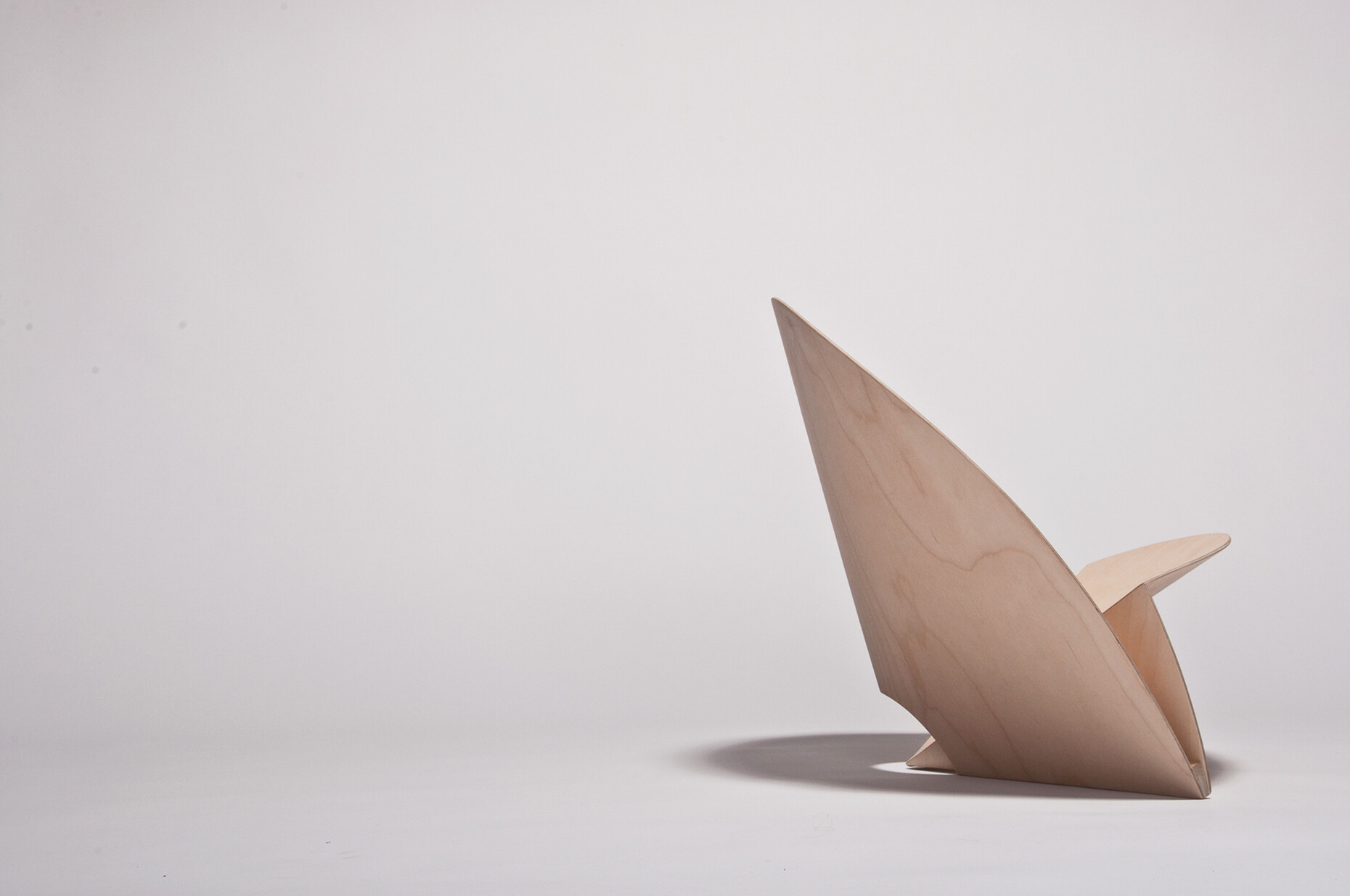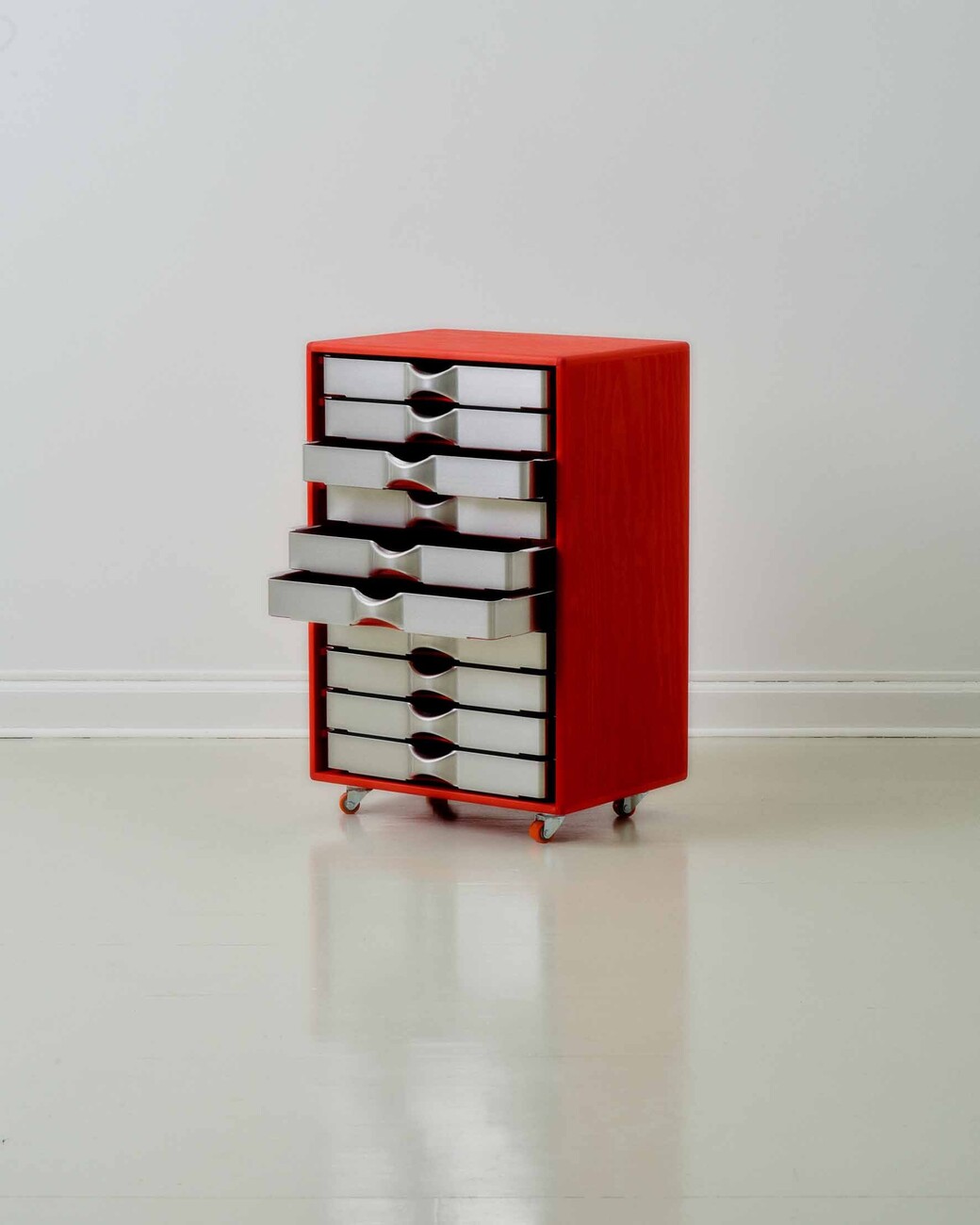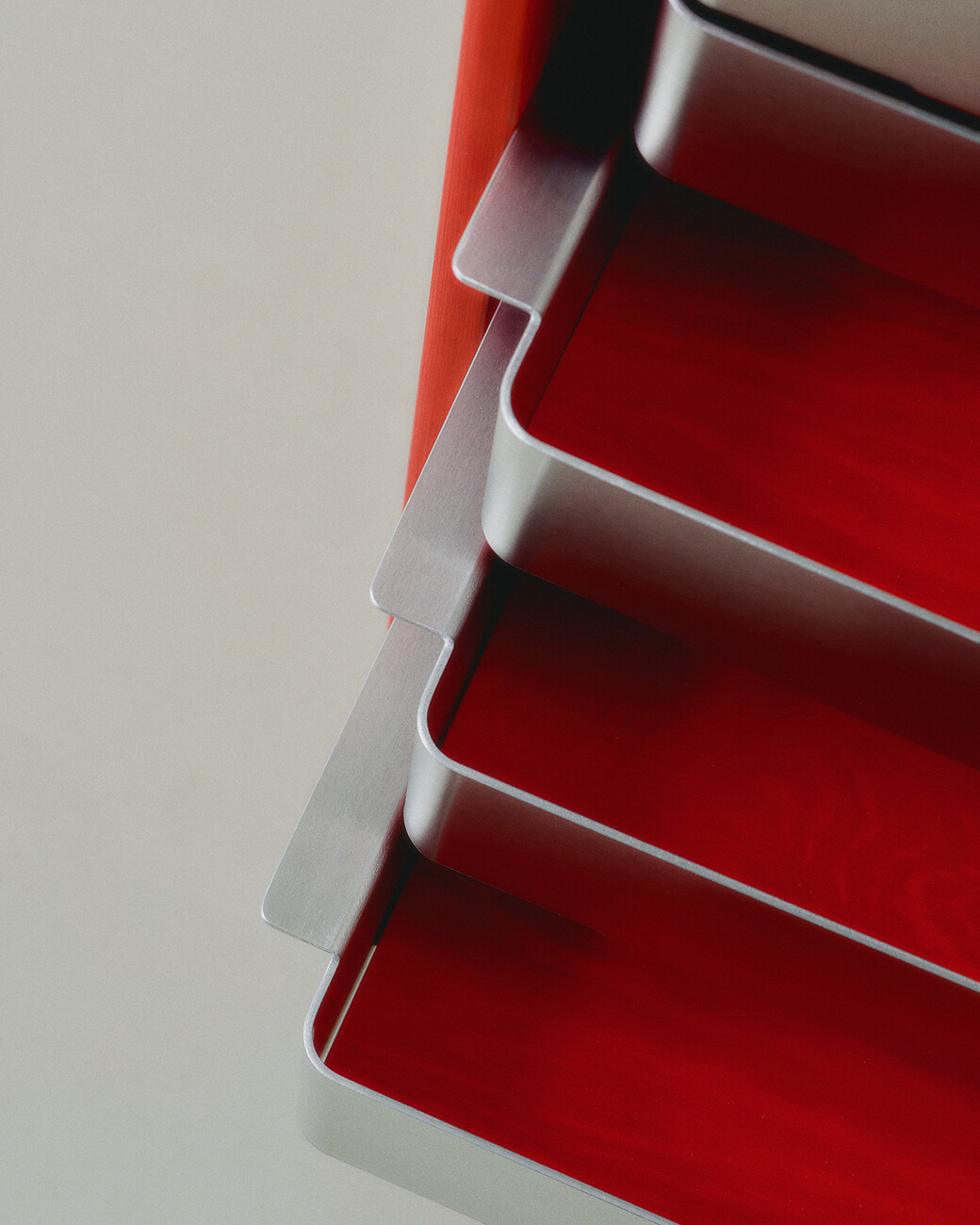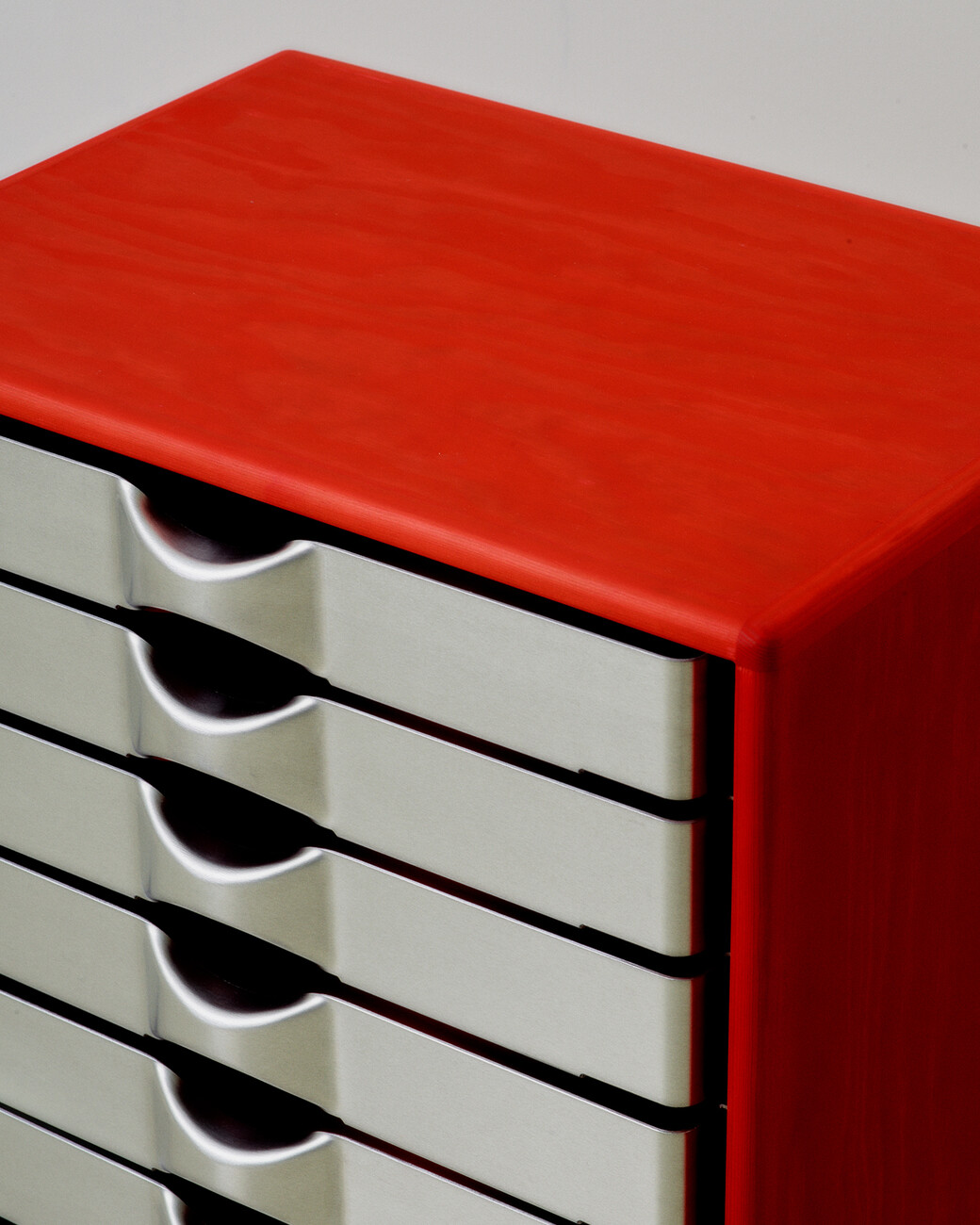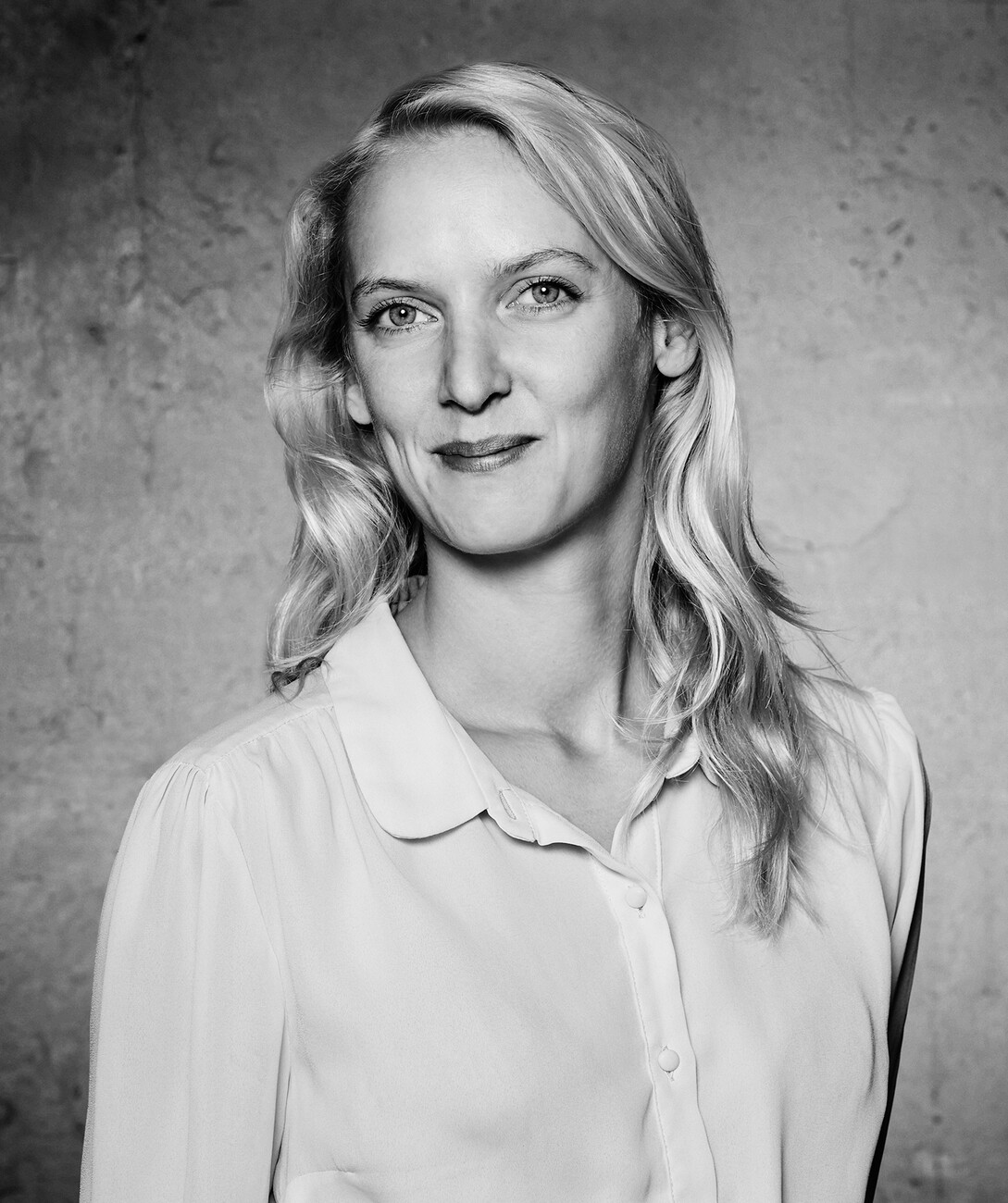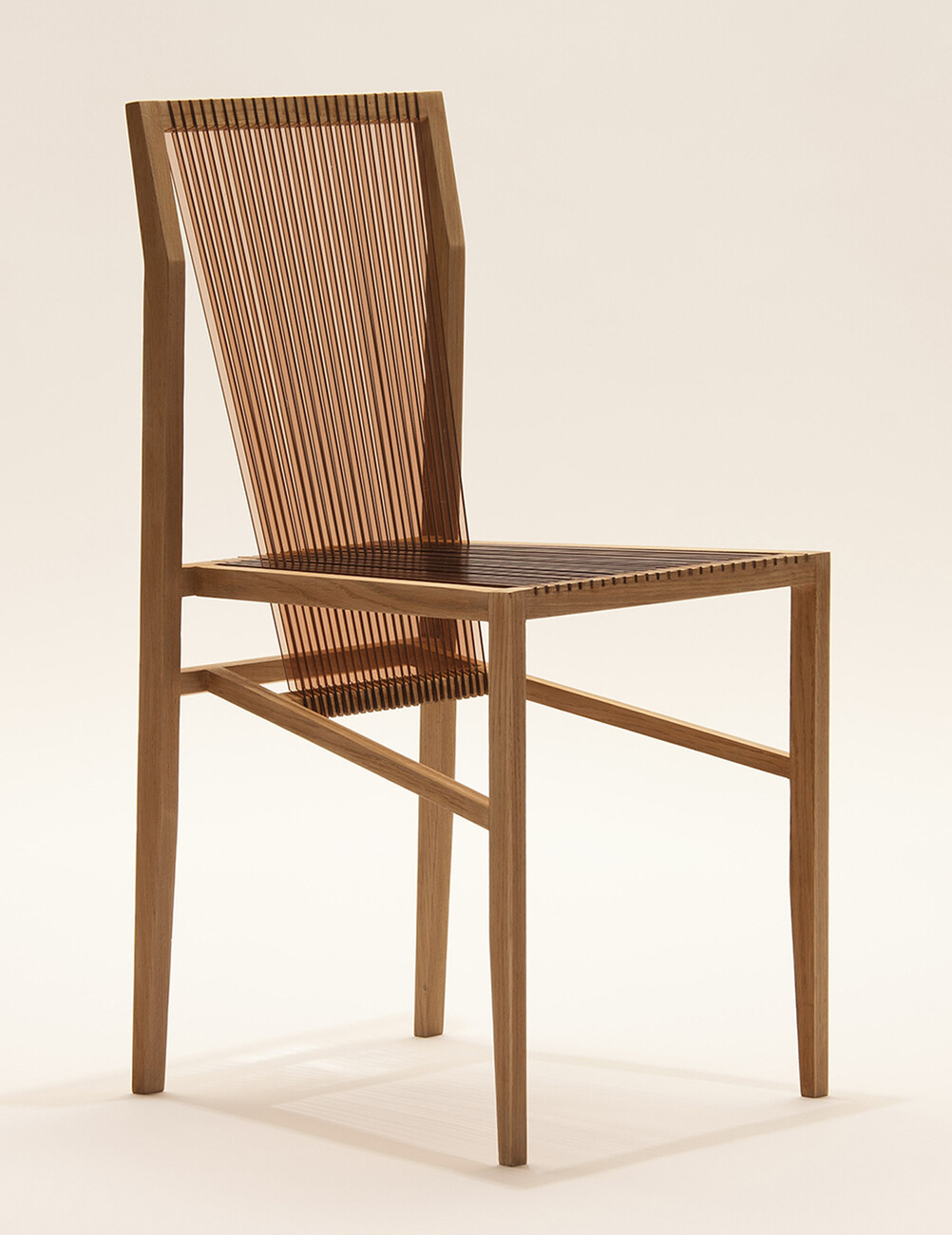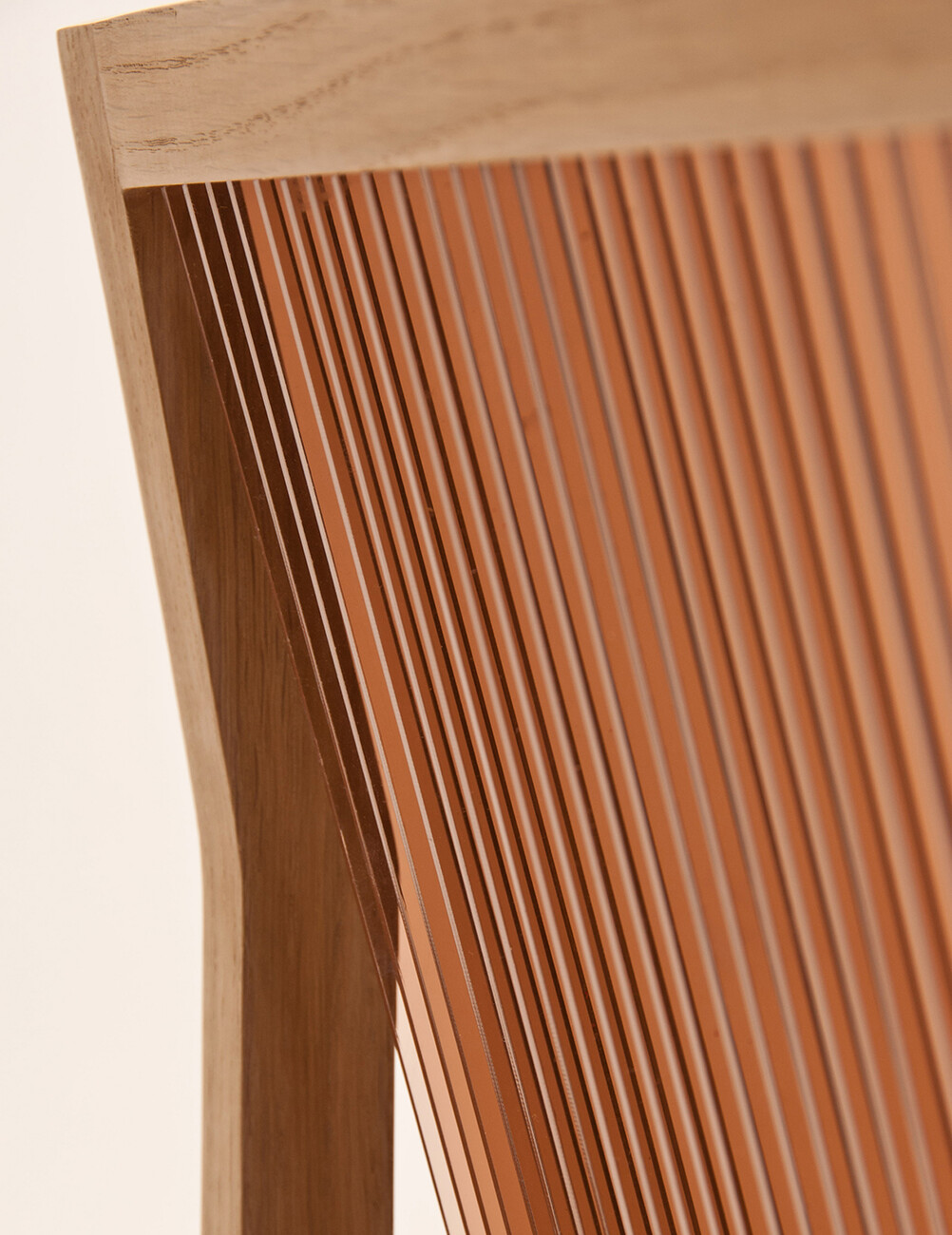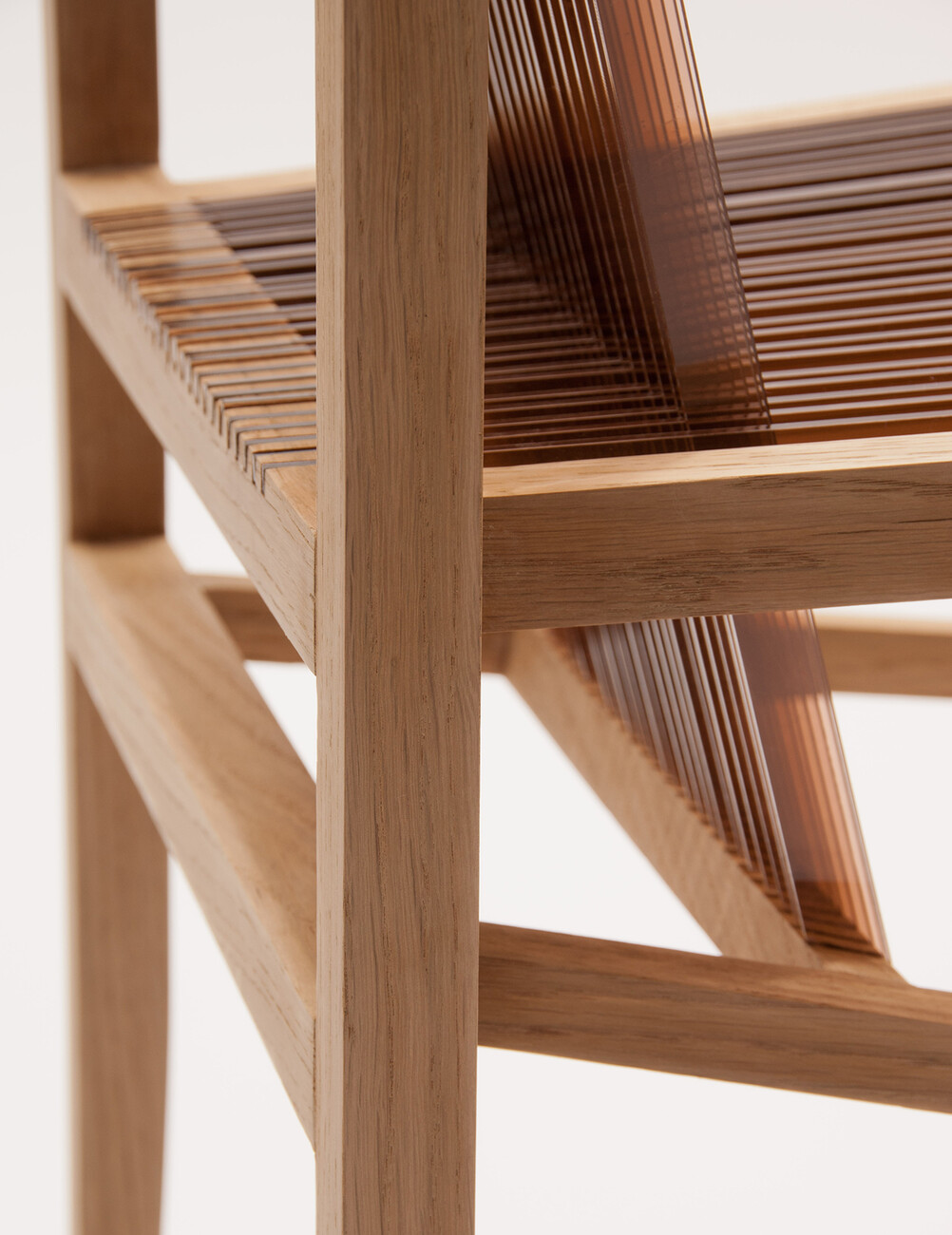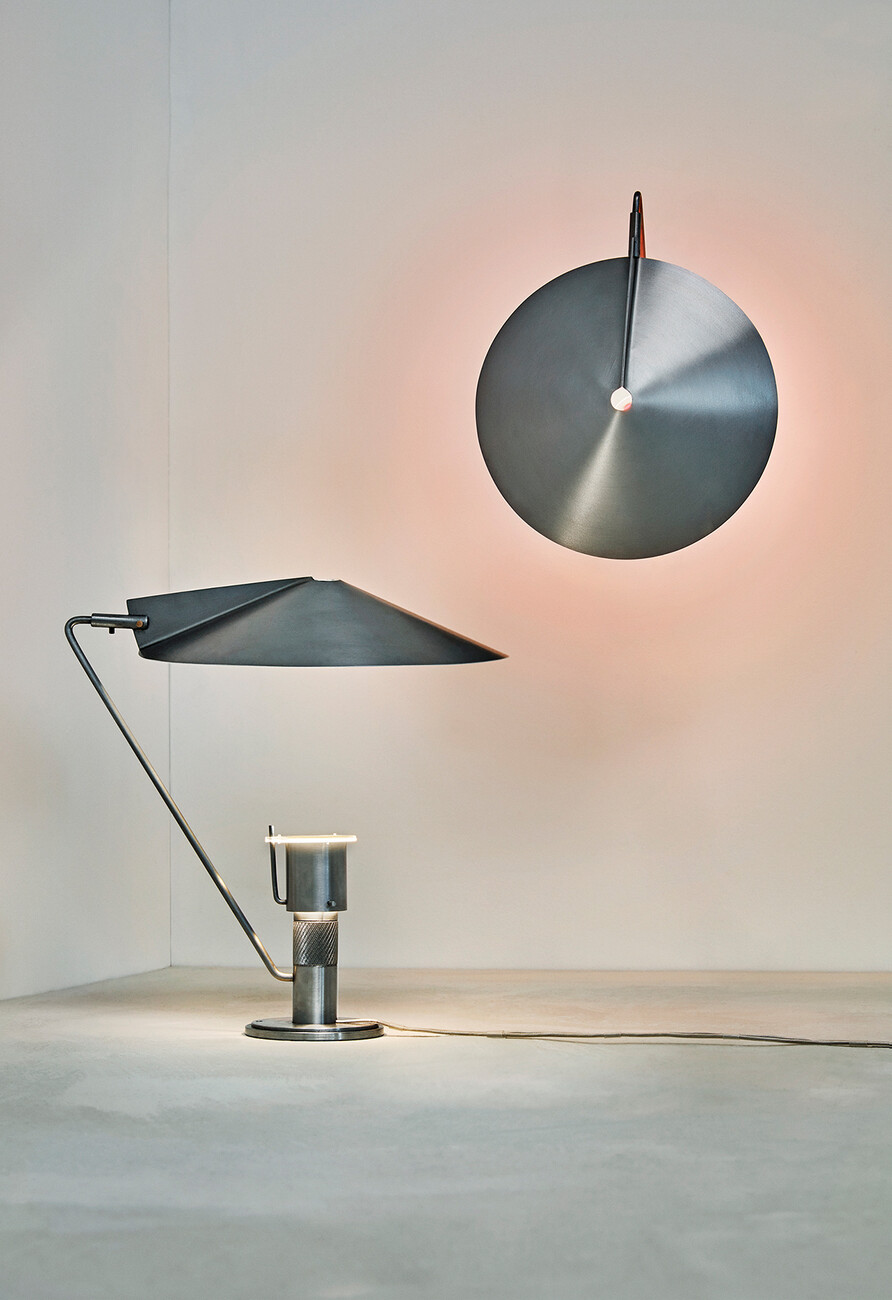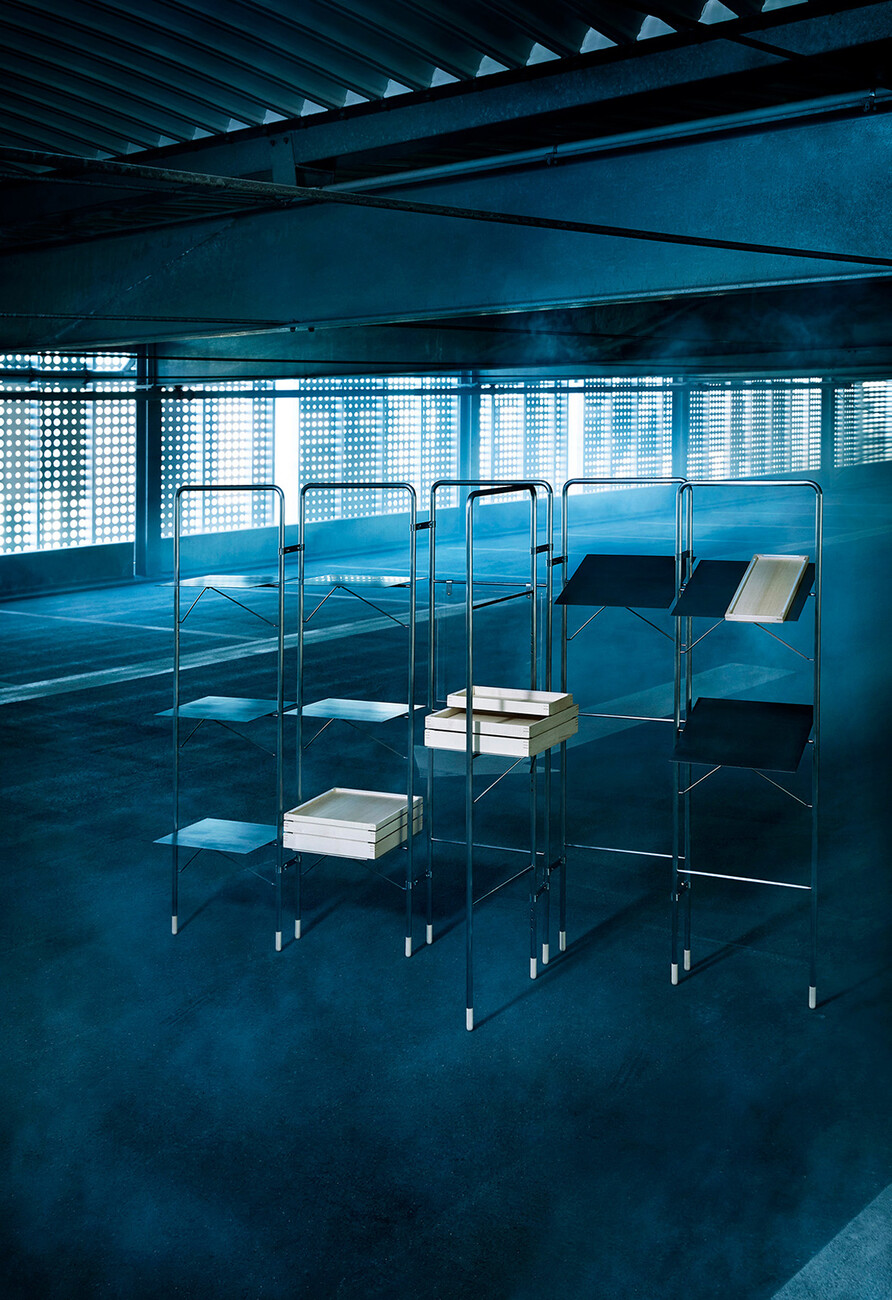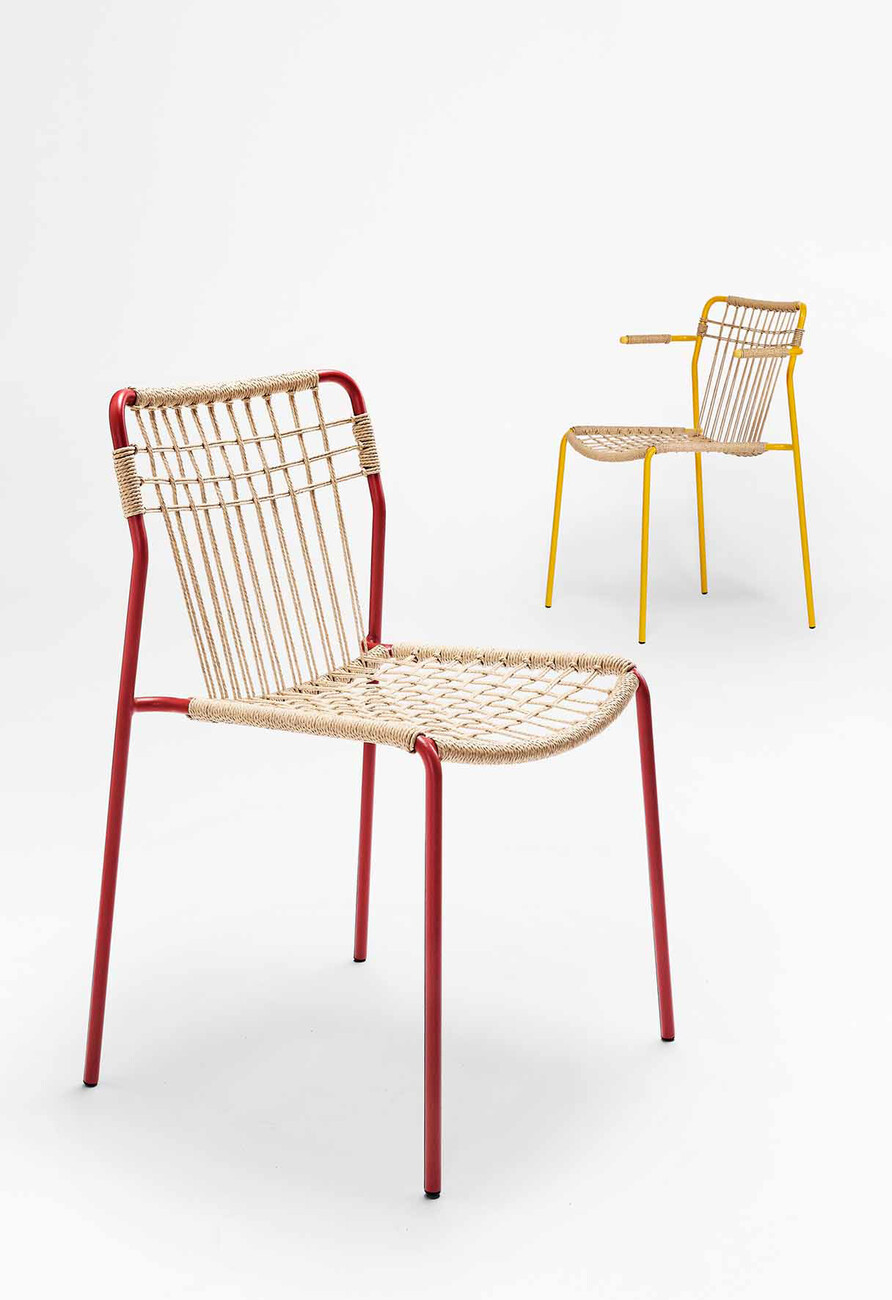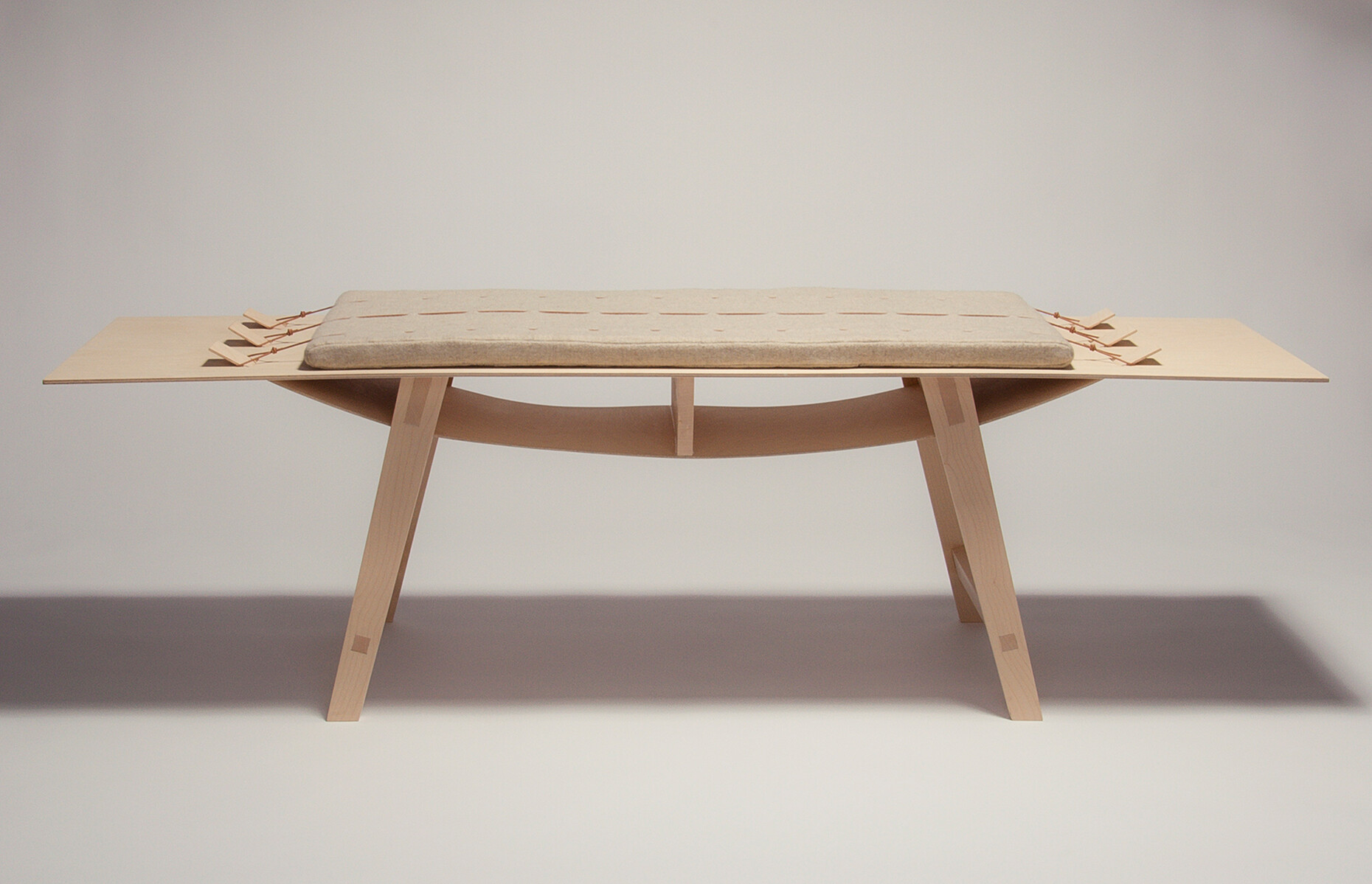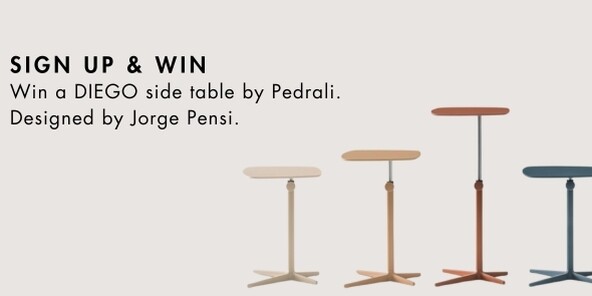YOUNG TALENTS
Modest everyday objects
Jasmin Jouhar: In the group exhibition ‘Værktøj 2’ at the 3daysofdesign in Copenhagen, you showed your specially designed chest of drawers, ‘Bow Tie’. What was the exhibition about?
Alvilde Holm: The concept was that all designers had to use the same tool for their design. This year, it was the workshop press. Among other things, it can be used to make sheet metal parts. You can punch, press and emboss with it. It's a really versatile tool. There was a press like this in the exhibition, and it's actually the one I used. It can press with 20 tonnes of force. That's enough to make smaller objects.
Did you use a mould to shape the sheet metal parts of the bow tie?
Alvilde Holm: Yes, that's the most common method. And that's also why it's expensive to produce just a few pieces. You need a complex steel mould. It becomes cheaper when you produce large quantities. For the exhibition, we developed moulds made of PLA (polylactide). We were able to simply 3D print them and experiment with them right away.
Could the process of printing moulds also be transferred to mass production?
Alvilde Holm: The 3D-printed PLA moulds are mainly intended for experimentation. It's a great way to get hands-on and try things out. To build prototypes before producing a final mould.
What is the idea behind ‘Bow Tie’?
Alvilde Holm: Actually, I wanted to make a chair (laughs). I spent the first few months working on chairs, only to realise at some point that I couldn't produce the prototype. I hadn't experimented at all. I had just thought about how I wanted to create a design using a press. I met up with a few other designers from the Værktøj group in a workshop, where we tried out some simple pressing tools and PLA moulds. I decided: Kill your darling! And I thought about smaller objects, something I could try out on a one-to-one scale. Simple, pressed things. That's how I came up with handle shells, like the ones you see on old filing cabinets. The idea was to design something that was obviously made with this press. Something that couldn't be produced in any other way.
Last year, you designed a chair for the ‘Danish Design Makers’ exhibition that is covered with paper cord, the classic ‘Danish cord’ familiar from many classic Danish furniture designs.
Alvilde Holm: The theme of the exhibition was reduction. In addition, all participants received a briefing from a brand. However, we did not know which one – it was like a blind date. My task was to design a stackable chair with upholstery. We worked with a digital tool for the furniture industry called ‘Målbar,’ which calculates how many emissions a piece of furniture causes. I tried out different materials, and paper cord had very low emission values. It's more sustainable than other upholstery materials – but it also has a completely different look. I wanted to push the limits of the material. How little webbing could I use? In classic designs, a lot of cord is used for the covering. The chair may look uncomfortable, but I would say it is actually very comfortable (laughs).
As a designer, what appeals to you about designing a piece of furniture?
Alvilde Holm: There is something very immediate about a piece of furniture. You can grasp it immediately; it is on the same scale as the human body. A piece of furniture tells you a story – and it is part of everyday life. When I go somewhere, the first thing I notice is the chairs. I love unpretentious everyday objects, things that are useful.
How important are novelty or innovation to you when designing a piece of furniture?
Alvilde Holm: As a designer, I have to be convinced that I can discover something new or find a different approach. If I wasn't convinced, I couldn't work. I would have stopped designing furniture long ago. It doesn't necessarily have to be something big; it can also be a detail. Like the handle I developed for the ‘Værktøj’ exhibition. It's a small thing that's a little different from what we're used to. But I don't think you have to reinvent furniture. You should look at it closely and ask yourself: Can I make this backrest a little better? Could I tell a different story with this handle?
In addition to furniture design, you also do a lot of work in exhibition design and scenography. How did that come about?
Alvilde Holm: Quite simply, my father works as an exhibition designer. Like me, he trained as a furniture designer but switched to exhibition design many years ago. He works freelance, and when a project is big enough, he brings me in.
What sets working on an exhibition apart from furniture design?
Alvilde Holm: We work with many different people. There is the museum team, but scientists often join us too – and, of course, graphic designers, lighting designers, craftspeople and artists. It's very much about collaboration and understanding what the clients want. I enjoy it, I learn a lot and it's entertaining because we approach every project differently.
What special skills and competencies do you bring to these collaborative processes as a designer?
Alvilde Holm: I think it's my ability to look at projects from above. To bring together the goals and ideas of everyone involved into a successful whole. I have to be able to see the result already during the process. To think everything through to the end. For example, leaving room for graphic design if the graphic designers join later. My job as a designer is to keep an eye on both the details and the big picture.
Where do you see yourself as a designer in the next few years? Do you want to continue working in different areas or specialise?
Alvilde Holm: Actually, I'm very happy doing a bit of everything. The different tasks inspire each other. However, I hope that I will have more opportunities to put my furniture designs into production. To see them in real life – as happens with exhibition design. But otherwise, in ten years' time, I would like to be designing furniture, designing exhibitions and working for artists – just as I am doing today.
